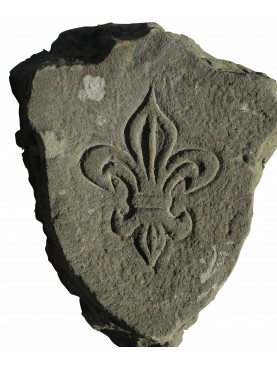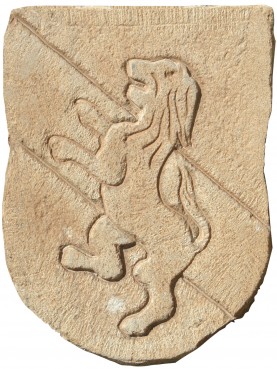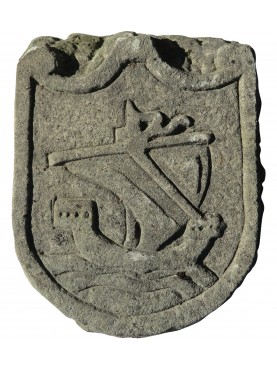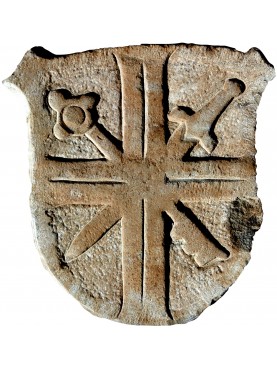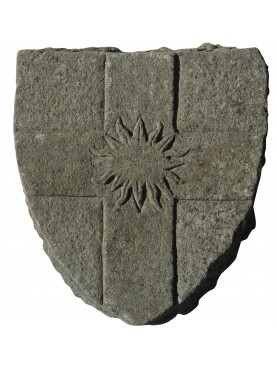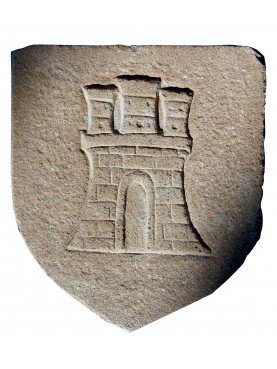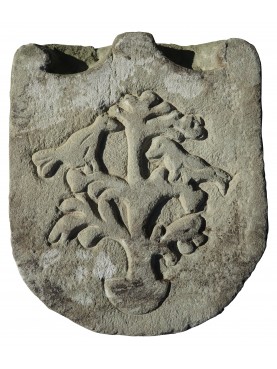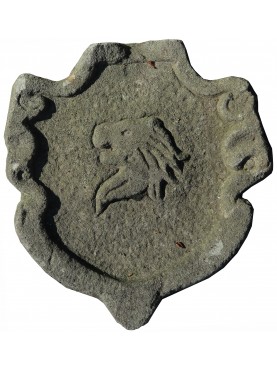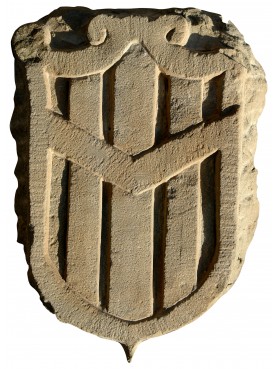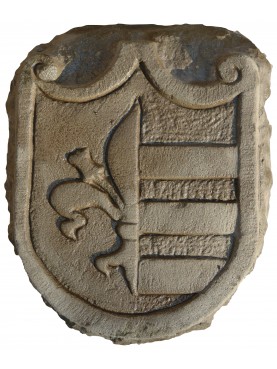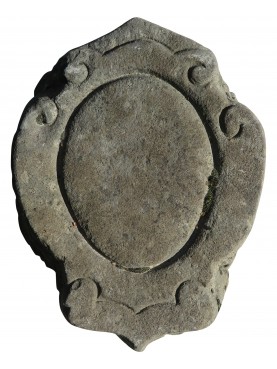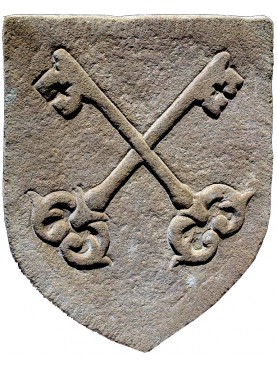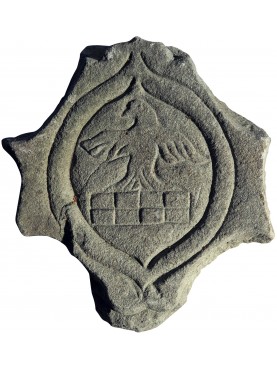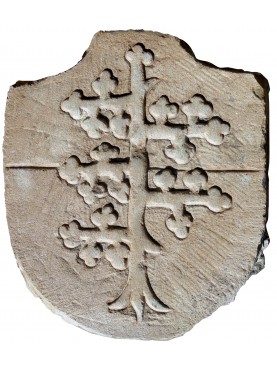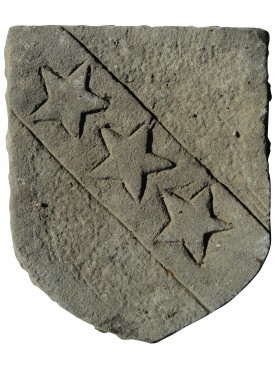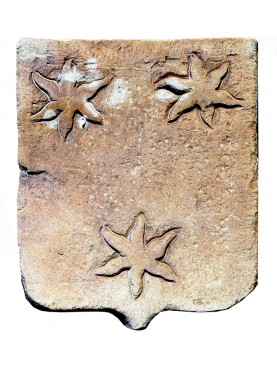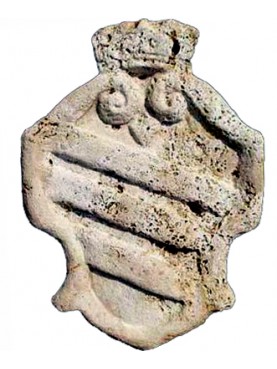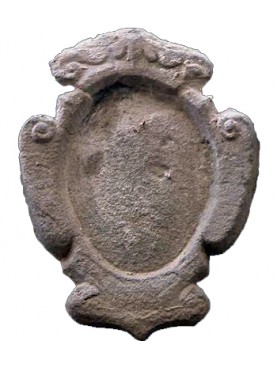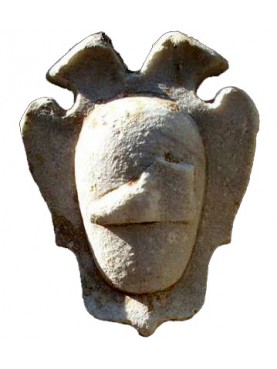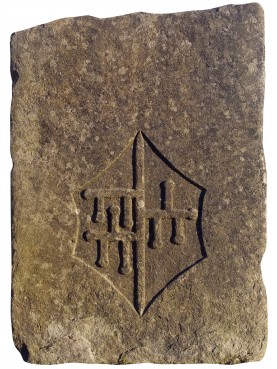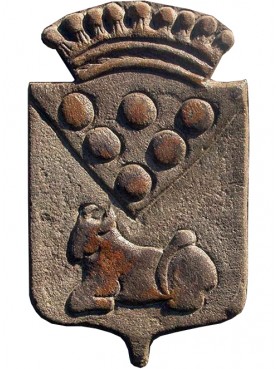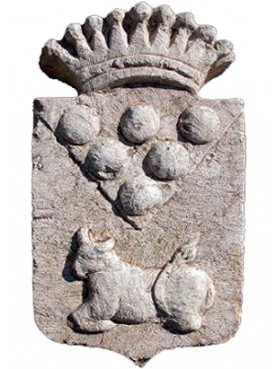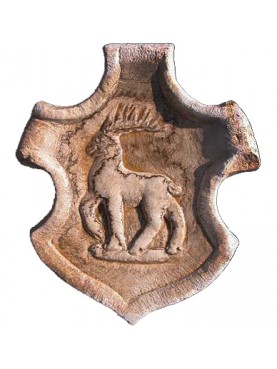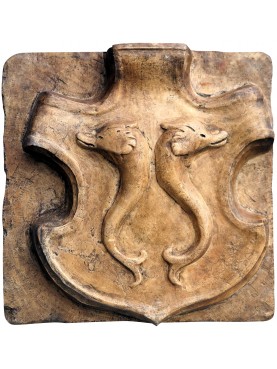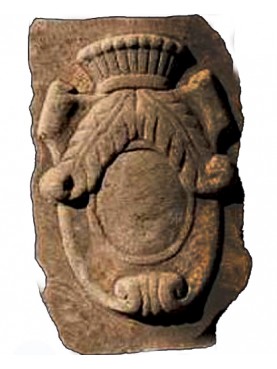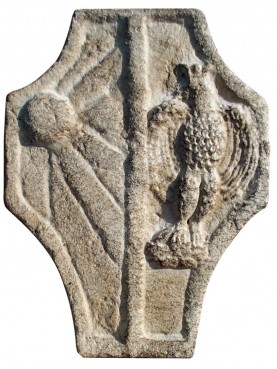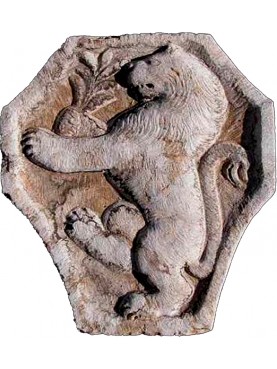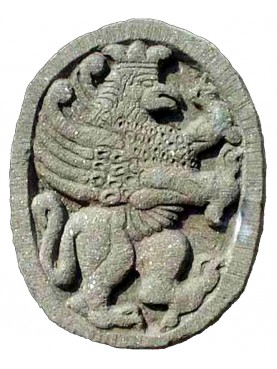Frescobaldi coat of arms in white Carrara marble
Frescobaldi coat of arms in white Carrara marble
15244
New
Coat of arms of the Frescobaldi family of our production. Copy of the original present on the facade of the Florentine Church of Santa Maria Novella. The coat of arms depicts the arms of the Frescobaldi, a horizontally halved field, gold above and red below with three silver drums. This coat of arms can also be reproduced on request in different sizes. Obviously the marble version is not polychrome.
Data sheet
| Height | 16.54 in | 42 cm |
| Width | 11.81 in | 30 cm |
| Thickness | 1.97 in | 5 cm |
| Weight | 39.68 lbs | 18 Kg |
| Manufacturing | Recuperando srl | |
| Material | White Carrara marble | |
| Museum where the Original is exhibited | Facade of Santa Maria Novella Florence |
More info
Frescobaldi family.
Having arrived in the city perhaps from the Val di Pesa around the 13th century (but some sources also indicate them as having a possible urban origin), they successfully engaged in merchandising and banking activities, like other illustrious families. Their main activities were wool production and trading, bank lending and, earlier than other families, farming on their vast country estates.
Dino Frescobaldi, a contemporary of Dante Alighieri and a great friend of him, according to Giovanni Boccaccio, was a very famous rhymer in Florence. The head of the family at the time was Berto Frescobaldi, often cited by Dino Compagni among the most influential men of the time, who openly took sides against Giano della Bella. Matteo, son of Dino, was an equally esteemed poet, while after 1348 Leonardo Frescobaldi wrote a famous account of a journey to the holy land in the company of Simone Sigoli and Giorgio Gucci, which had been wanted and promoted by the bishop of Volterra, urged in turn by the King of Naples (although some historians doubt that Lionardo was sent on a mission by the King of Naples, and consider it his boasting)[1].
The Frescobaldi headquarters were located between Borgo San Jacopo, where they owned a tower house, Via Santo Spirito, where they had various houses, and, above all, what is now called Piazza dei Frescobaldi, where the family's main palace existed (today partly incorporated into the Palazzo della Missione), which overlooked the Santa Trinita bridge, built thanks to the financing of the family itself in 1252, to facilitate convenient transit between the two banks. A family of solid Guelph and black faith, they had the privilege of hosting Charles of Valois in their palace when he came to Florence to drive out the White Guelphs on behalf of Boniface VIII.
Having moved away from Corso Donato when things began to go badly for his party, a few decades later they also behaved similarly with the Duke of Athens Gualtieri VI of Brienne, first supporting his arrival, then siding with the magnates who forced him to flee .
As bankers they often financed some European sovereigns, such as Edward I and Edward II of England, and were also responsible for collecting papal tithes: first indirectly, through the Sienese Solafico bank, then directly with Nicholas III, who delegated them (merged era with the Alfani bank) the collection in the Germanic area, and then Martin IV, who entrusted him with financial operations in England and Scotland to finance a crusade that never took place against Peter III of Aragon. They were involved in the bankruptcy of numerous Florentine companies due to the insolvency of King Edward III, but having exposed themselves less than other families, thanks to this caution they managed to recover from the blow and continue their business.
In 1444 Stoldo di Lamberto Frescobaldi donated some land owned by him and was among the financiers for the construction of the Basilica of Santo Spirito, the last grandiose work of Filippo Brunelleschi. The other church embellished by the family in previous times was San Jacopo Soprarno.
Relations with the Medici were fluctuating: in 1481 Battista Frescobaldi was executed for plotting against Lorenzo de' Medici. It is not clear how the events unfolded, the incomplete documents speak of a desire to assassinate the Magnificent on the day of the Ascension in the church of Carmine.
During the period of the principality, however, they were supporters of grand ducal politics with some family members awarded the honorary position of senators, although in general the family dedicated themselves to their own business on the agricultural estates in Tuscany and dedicated themselves rather limitedly to politics. At that time they also obtained the title of marquises.
After the conversion of the original Palazzo Frescobaldi into an Augustinian convent in the sixteenth century, between 1621 and 1644, on the initiative of Matteo Frescobaldi, a new large palace was built in via Santo Spirito, which since then became the main one of the family, Palazzo Frescobaldi still existing today in Florence.
The family still exists and is mainly engaged in the production of excellent wine and oil, with the marquis and president Lamberto Frescobaldi.
Source Wikipedia





